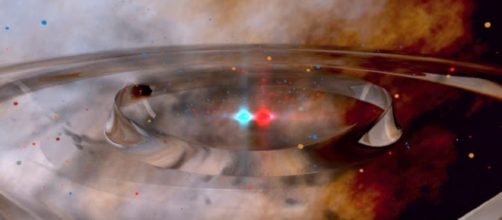Finally, Albert Einstein’s prediction came true. What the 20th-century genius dismissed as a mathematical illusion found its way to LIGO.
Three physicists just recently validated Albert Einstein’s claim about the remarkable existence of ripples in the fabric of the cosmos. These American physicists who astoundingly made the first ever observations of Einstein’s gravitational waves were granted the 2017 Nobel Prize Award in Physics, The New York Times reported.
On Tuesday, the Royal Swedish Academy of Sciences in Stockholm proudly announced that the 85-year old American physicist, Dr.
Rainer Weiss, won a whopping amount of half of the 9 million Swedish Krona prize. The amount is about $1.1 million or £825,000. Dr. Barry Barish (81) and Dr. Kip Thorne (77) shared the other half of the prize.
Moreover, a Nobel prize could only have three laureates at most, so this one was awarded to the three American physicists who pioneered Laser Interferometer Gravitational-Wave Observatory (LIGO). LIGO was able to prove Albert Einstein’s theory on gravitational waves substantially, Vox reported.
Taking off from where Einstein left
A prominent member of the prestigious Nobel committee for physics lauded LIGO for their unparalleled achievement. Professor Olga Botner called their work a great discovery that utterly “shook the world” to its very core.
Dr. Weiss' research furthered the reach of science and broadened our understanding on the physical universe. The gravitational waves detections made by LIGO ultimately validated the century-old theory of Albert Einstein.
It was a hundred years ago when Albert Einstein theorized that an enormous collision of giant black holes would essentially distort the very fabric of the cosmos as well as time itself. Einstein found out that, at the speed of light, the cataclysmic disturbance would quickly ripple outward, emitting gravitational waves. Einstein’s theory gave birth to the idea of spacetime. Nevertheless, Albert Einstein never considered that detecting the waves would be entirely possible. He dismissed the notion as only a mathematical illusion.
The twin detectors that made the discovery of the 21st century
This great discovery had its humble beginnings. In the mid-1970s, Dr. Rainer Weiss and Dr. Kip Thorne took a major leap in their career. They started what many might think impossible: a cosmological quest to detect gravitational waves. Later on, all their hard work paid off, so much so that LIGO became very successful in revolutionizing our understanding of the physical world and the universe.
Many wondered what the twin detectors would be like. At a glance, the twin detectors of LIGO were basically composed of two pairs of perpendicular pipes that were approximately 4 kilometers long. In addition, one detector was positioned in Livingston, Louisiana, while the other was placed in Hanford, Washington state.
These twin detectors were designed to be intricately sensitive. They could accurately detect any distortion of a thousandth of the diameter of an atomic nucleus across a very wide range of laser beams.
The recent collision of two giant black holes was astoundingly detected by the twin detectors. One of the giant black holes was a bit smaller, while the other had 35 times the sun’s mass. These black holes were approximately 1.3 billion light years away from Earth.
At the outset of this cosmological phenomenon, the two giant black holes were actually circling each other 30 times per second. This activity happened during the beginning of the 20-millisecond “chirp” in the signal. Following that, the rate drastically accelerated to about 250 times per second before the enormous collision.
Furthermore, the Astronomer Royal and emeritus professor of physics at the University of Cambridge said the one-in-a-million discovery was in fact “distinctive and complementary.” On the contrary, Sir Martin Rees believed that the decision to award individuals over collaborations (citing the case of Weiss’ team) was becoming more and more problematic. He pointed out a similar case in the previous year in which three British physicists won the Nobel Prize for physics for their joint efforts to study about exotic states of matter. Rees believed that the award must be given to one individual only. A Nobel Prize award for a collaborative work did not actually mirror the nature of modern science, Rees concluded.


